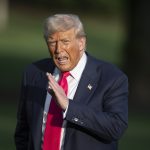Yo, here comes another big bang in the global trade arena—President Donald Trump’s move to double tariffs on imported steel and aluminum from 25% to a shocking 50%, effective June 4, 2025. This policy, dressed up as a muscle-flexing maneuver to revive American manufacturing and protect domestic workers, is like tossing a Molotov cocktail into international markets, triggering massive aftershocks for countries like India. For a nation whose steel and aluminum exports to the U.S. tallied around $4.56 billion in fiscal 2025, this tariff blast feels like a brutal gut punch.
The Metal Maze: How Tariffs Hammer Indian Exports
India’s steel and aluminum shipments to the U.S. are no small fry—they cover critical sectors like manufacturing and heavy industry, areas that underpin India’s broader economic health. Doubling tariffs means Indian exporters now face a wallet-draining entry fee when trying to get their metal goods across the ocean. This makes their products pricier and less juicy compared to American-made steel or imports from countries escaping such high tariff bullets. American importers and manufacturers, naturally, will sniff out alternatives to dodge this extra cost—either switching to domestic producers or preferred countries with friendlier tariffs. The result? A chilling risk of contraction in India’s metal export market.
But the pain doesn’t stop there. According to economic soothsayers like Goldman Sachs, this tariff hike could shrink India’s GDP growth by up to 0.6%. To picture it, imagine a factory floor reliant on metal supply chains suddenly hit with a shortage or higher prices—industrial output stumbles, jobs get shaky, and micro, small, and medium enterprises (MSMEs) that bank on these exports find their profits slipping through their fingers. These MSMEs aren’t just business units; they’re vital threads in India’s economic fabric. Faced with these headwinds, many will have to rethink market strategies, diversify their risks, or else face the slow drip of economic erosion.
The Return of Trade Tensions: Protectionism Strikes Back
This tariff escalation echoes the foggy trade wars from earlier Trump years. Remember 2018? The U.S. slapped a 25% tariff on steel and 10% on aluminum, citing national security concerns under Section 232 of the Trade Expansion Act. The fresh jump to 50% isn’t just a tweak; it’s a megaphone blast, a so-called “big jolt” to kickstart American metal industries. But experts warn this doubling act risks unleashing a chain reaction—retaliatory tariffs from the targets, drawn-out global trade uncertainty, and fragmented markets. Countries circle their wagons, alliances fray, and global commerce feels the squeeze, not unlike a simmering powder keg waiting for the next spark.
India’s pushback includes retaliatory customs duties on selected U.S. goods, a move to signal displeasure but one limited in scope. Relative to other countries, India’s export volumes to the U.S. steel and aluminum sectors are moderate, which might soften some direct damage. Plus, sectors like pharmaceuticals, semiconductors, copper, and energy remain untouched by these tariffs, offering a sliver of breathing room. Yet, the metals sector’s vulnerability highlights the tangled global web—the impact of one country’s policy ripple instantly spreads and tangles others in its wake.
Navigating a Fractured Trade Future: Strategies for Survival
In this rough-and-tumble era of protectionism, India can’t simply sit on its hands. Trade think tanks like the Global Trade Research Initiative (GTRI) push Indian exporters to hedge bets: diversify away from an overreliance on the U.S. market, strike new trade agreements, and sharpen competitiveness through innovation and value addition. This isn’t just business advice; it’s a blueprint for survival. Strengthening domestic metal industries comes front and center, as internal resilience can buffer external shocks. Developing more robust and flexible supply chains will be key, given how unpredictable and volatile international trade climates have become.
Diplomatic finesse also gains prominence. With Prime Minister Narendra Modi poised for high-stake talks with U.S. leaders, there’s a critical chance to advocate for fairer trade terms and soothe rattled trade relations. Multilateral forums offer platforms to rally support against unilateral tariff surges and push for rules that balance national interests with global cooperation.
This policy also signals a broader global trend: protectionism leading to market fragmentation. Countries are reconsidering alliances, recalibrating export destinations, and betting on more secure, diversified trade routes. For India, this means riding the wave of geopolitical shifts while safeguarding growth engines and export momentum.
To sum it all up with a boom and a crack, Trump’s tariff hike on steel and aluminum is no small spark—it’s a firecracker threatening to blow up India’s $4.56 billion metal export scene and ripple through the economy with a tightening grip. The tariff bubble bursts revealing the precariousness of global trade relations, where every policy shift hits like a detonator. India’s response—through market diversification, industry bolstering, and savvy diplomacy—will dictate whether it rides out the storm or gets caught in the rubble. Pow! Sometimes, in economics as in life, you gotta be the one holding the fire extinguisher while the fireworks explode.







